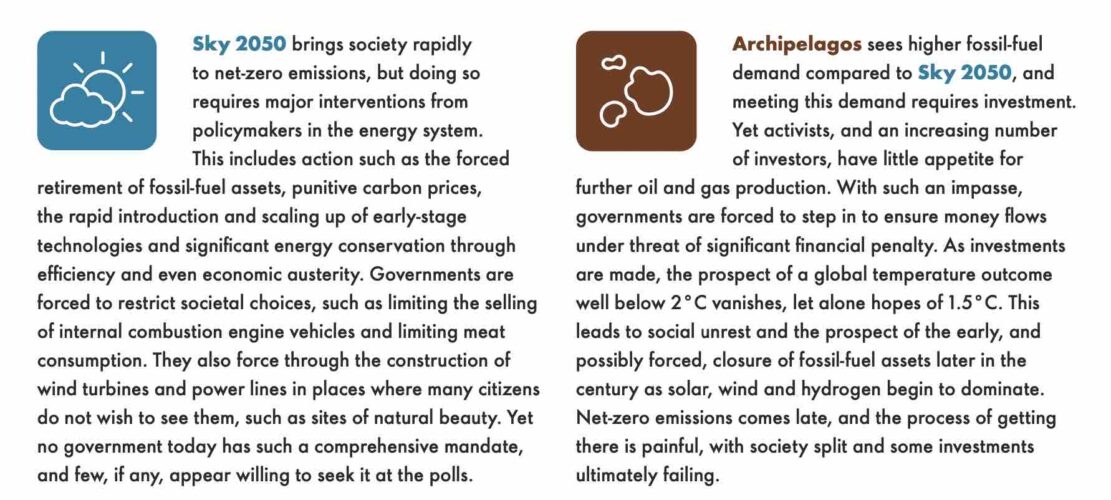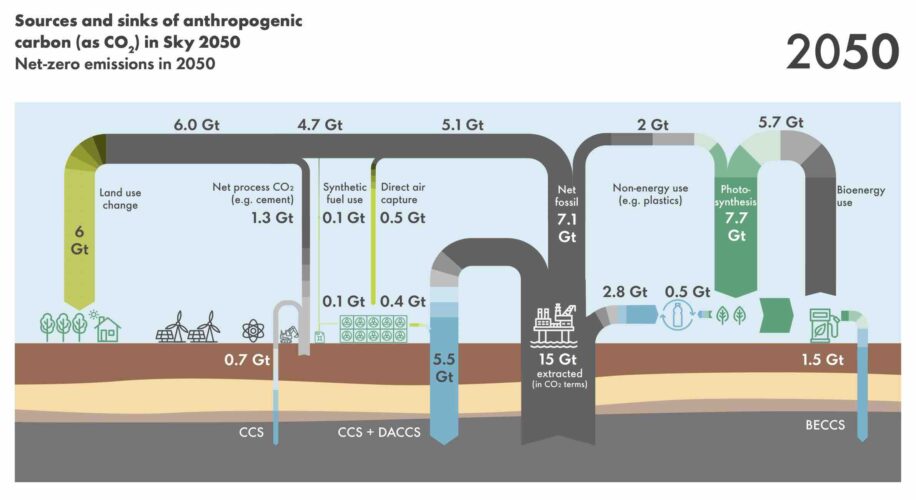The fossil fuel industry is really winding up the scare campaign in the face of increasingly urgent calls to accelerate the switch from coal, gas and oil to a clean energy future based around wind, solar, storage, electric vehicles and electrification across the economy.
The Australian gas industry is telling lies and warning of multiple “major blackouts” in coming years and having to “save the Aussie BBQ”, and their claims are amplified daily by the right wing media owned by Murdoch and Nine.
Now oil giant Shell has topped the lot, providing – in the same week as the latest dire warnings on global warming by the IPCC – a dystopian view of what a clean energy transition might look like. Yes, we can do it, says the company that brought in $US40 billion of profits last year, but it will be costly and awful.
Shell has been conducting scenarios for some time now, which it says are not “predictions” but which clearly provide cover for its intent to pursue its current business model as long as it can.
Its latest energy security scenario report covers two different outcomes. One is Sky 2050 – where the world achieves “net zero” by 2050, with all sorts of horrible interventions.
The other is called “Archipelagos”, where the world by 2100 is still only “approaching” net zero, and hurtling its way well past the Paris targets and a safe climate, despite all the annoying work by activists who get in the way of new oil and gas investment.

The Sky 2050 scenario borrows a lot of the normal “scare” tactics from the fossil fuel playbook – a world deprived of meat, the free choice to drive dirty and polluting vehicles, government imposed austerity measures, and communities forced to endure wind farms in places they don’t want.
“Sky 2050 brings society rapidly to net-zero emissions, but doing so requires major interventions from policymakers in the energy system,” the company says, dismissing the most advanced of these economies, the EU, of pursuing a “green dream.”
Shell goes on: “This includes action such as the forced retirement of fossil-fuel assets, punitive carbon prices, the rapid introduction and scaling up of early-stage technologies and significant energy conservation through efficiency and even economic austerity.
“Governments are forced to restrict societal choices, such as limiting the selling of internal combustion engine vehicles and limiting meat consumption.
“They also force through the construction of wind turbines and power lines in places where many citizens do not wish to see them, such as sites of natural beauty. Yet no government today has such a comprehensive mandate, and few, if any, appear willing to seek it at the polls.”
Of course, the path to net zero doesn’t have to look anything like that. The IPCC report makes it clear that the economic, and environmental benefits of moving rapidly to net zero outweighs the costs by some significant margin.
The Rewiring America and Rewiring Australia campaigns, which plot a path of moving away from the fossil fuel products sold by Shell, also make it clear that the savings greatly outweigh the costs.
Yes, it requires rapid action and clear policies, but the technologies are there. But frankly, presenting a choice between what will be cheaper and better performing EVs over the fossil fuel engines burning Shell’s products will be a no-brainer for most consumers.
Shell then cheers us all up by declaring, at the end of all that, the 2050 target of net zero, and staying within the remaining carbon budget of 380 gigatonnes is a “near impossible task.”
(It should be noted that the IPCC has actually ramped up its calls for net zero to be reached by 2040, not 2050, but that really would be the impossible dream and a nightmare scenario for the fossil fuel majors.)
Shell says the overshoot of the carbon budget can be rectified by removing CO2 from the atmosphere and storing it geologically.
“Society needs to recognise the role of carbon capture, carbon removal from the atmosphere and carbon storage,” it says of the two least proven and most costly technologies (but ones which allow fossil fuels to be sold beyond 2050).
“The need to develop large-scale capacity is critical for managing atmospheric CO2 levels and dealing with an overshoot of the carbon budget.”
That creates a deliriously happy outcome for Shell shareholders. It and other fossil fuel producers can still produce 15 gigatonnes of fossil fuel emissions a year in 2050 – still nearly half what they do now – on the assumption that carbon capture and storage will actually become a widely deployed thing.
It does rely on the assumption that direct air capture with carbon storage (DACCS), which supposedly strips CO2 from the air and stores it permanently in geological formations, and bioenergy with carbon capture and storage (BECCS), become a reality.

Which, in Shell’s world, means we can all live happily ever after, despite the ongoing fossil fuel production.
In Sky 2050, by 2100, DACCS has eclipsed other CO2 capture and storage mechanisms within the economy,” it says. “DACCS may even offer the world of the 22nd century the means to restore the global ecological balance to pre-industrial times and regain the environmental security that could come with it.”
Just a shame the authors won’t be around to see how that turns out. The grandkids might be, and could be muttering to themselves: “WTF grandpa. Why didn’t you just go electric and eat more vegetables? It wasn’t that hard.”










